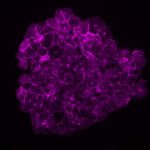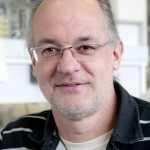Link to Pubmed [PMID] – 19218088
Link to DOI – 10.1016/j.chom.2008.12.012
Cell Host Microbe 2009 Feb; 5(2): 179-90
Clonally variant gene families underlie phenotypic plasticity in Plasmodium falciparum, a process indispensable for survival of the pathogen in its human host. Differential transcription of one of these gene families in clonal parasite lineages has been associated with chromatin modifications. Here, we determine the genome-wide distribution in P. falciparum of a histone mark of heterochromatin, trimethylation of histone H3 lysine 9 (H3K9me3), using high-resolution ChIP-chip analysis. We show that H3K9me3 is specifically associated with clonally variant gene families, which are clustered on subtelomeric and some chromosome internal regions. High levels of H3K9me3 correlate with genes localized to the nuclear periphery, implying chromosome loop formation. Disruption of the histone deacetylase PfSir2 causes changes in H3K9me3 that are discontinuous along chromosomes and associated with disrupted monoallelic transcription. Our data point to the existence of perinuclear repressive centers associated with control of expression of malaria parasite genes involved in phenotypic variation and pathogenesis.



